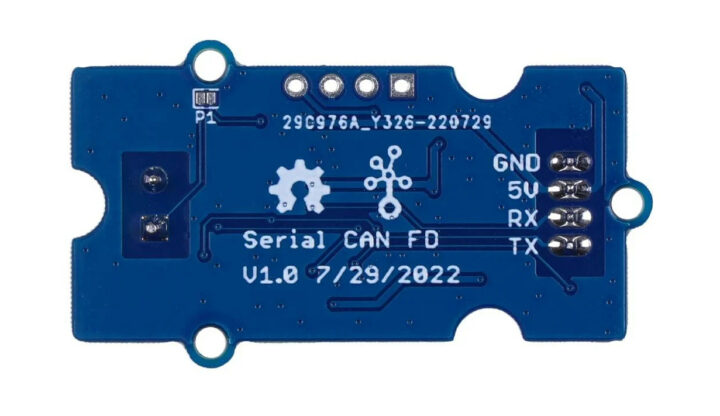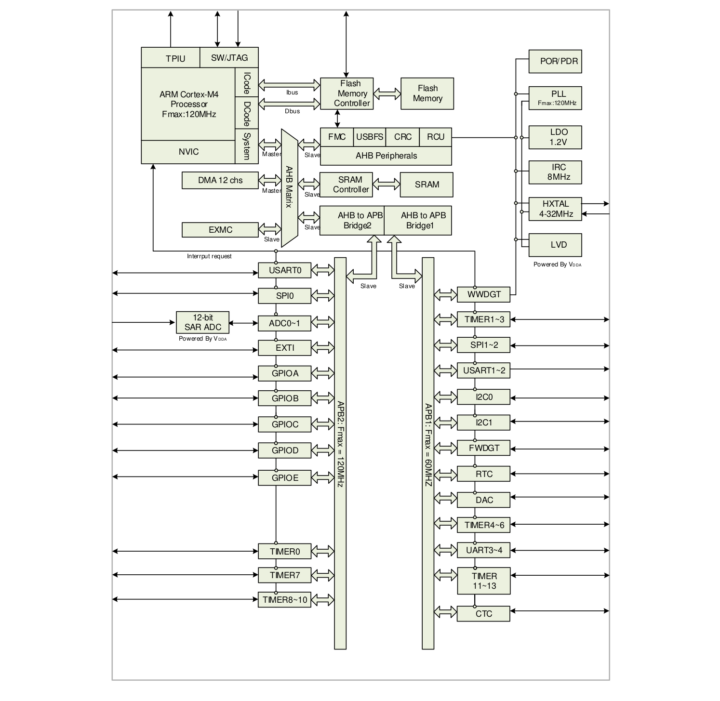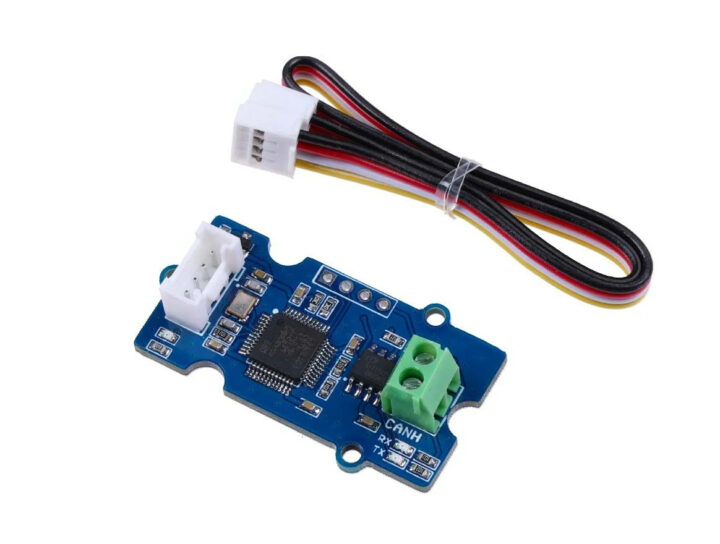Seeed Studio has introduced a new CAN Bus Grove module based on 120 MHz Gigadevice GD32E103 Arm Cortex-M4+ microcontroller with support for CAN FD at up to 5Mbps and controlled by AT command over a serial interface.
The new module appears to be a drop-in replacement for the company’s $19.90 Serial CAN-BUS Grove module based on Microchip MCP2551 and MCP2515, and the main benefit of the new GD32E103 module is that it is much more cost-effective going for only $4.90 including shipping.
GD32E103 CAN BUS Grove module specifications:
- MCU – Gigadevice GD32E103 Arm Cortex-M4F microcontroller @ up to 120 MHz with 64KB to 128KB flash, 20KB to 32KB SRAM
- CAN Bus – 2-pin terminal block with CAN FD up to 5 Mbps
- Host connection – 4-pin Grove connector with UART up to 115,200 bps (default 9,600 bps)
- Misc – Tx and Rx LEDs
- Operating voltage – 3.3V
- Dimensions – 40 x 20 x10 mm
CAN Bus modules and boards are mostly designed for car hacking, but not only, as the CAN bus can find its way into 3D printers, building automation, lighting control systems, as well as medical instruments and equipment.
 While not explicitly listed in the specifications, the new module can apparently still be fitted with a 120Ω terminal resistor (P1) if needed, just like the first board based on Microchip MCP2551 and MCP2515. Seeed Studio says they wrote firmware to implement the serial port to CAN FD function, but without other details provided. Having said that, the GD32103E CAN Bus module probably uses the same AT command sets as the Microchip module, and documentation for the latter can be found on the Longan Labs website, the company that seems to handle all CAN Bus projects for Seeed Studio. You’ll also find some Arduino sketches there to try out the CAN Bus module.
While not explicitly listed in the specifications, the new module can apparently still be fitted with a 120Ω terminal resistor (P1) if needed, just like the first board based on Microchip MCP2551 and MCP2515. Seeed Studio says they wrote firmware to implement the serial port to CAN FD function, but without other details provided. Having said that, the GD32103E CAN Bus module probably uses the same AT command sets as the Microchip module, and documentation for the latter can be found on the Longan Labs website, the company that seems to handle all CAN Bus projects for Seeed Studio. You’ll also find some Arduino sketches there to try out the CAN Bus module.

But since the GD32E103 is an Arm Cortex-M4F microcontroller you’d think you could use the module standalone as well, but Seeed Studio says “it can not be used as an MCU yet, and this feature will be implemented soon in the future”. That probably means they’ll provide Arduino or MicroPython firmware, as documentation and resources to build C programs can be found on the gd32mcu.com website, including a standard firmware library compatible with Arm’s CMSIS (Cortex-M Microcontroller Software Interface Standard).
You’ll notice there’s no CAN bus in the block diagram above, and the datasheet does not refer to the two CAN bus interfaces at all, instead reading “5. Adjust the number of modules and delete CAN.” in the datasheet history section. However, the CAN bus is still documented in the user manual. I’m not sure what happened here…

Jean-Luc started CNX Software in 2010 as a part-time endeavor, before quitting his job as a software engineering manager, and starting to write daily news, and reviews full time later in 2011.
Support CNX Software! Donate via cryptocurrencies, become a Patron on Patreon, or purchase goods on Amazon or Aliexpress





